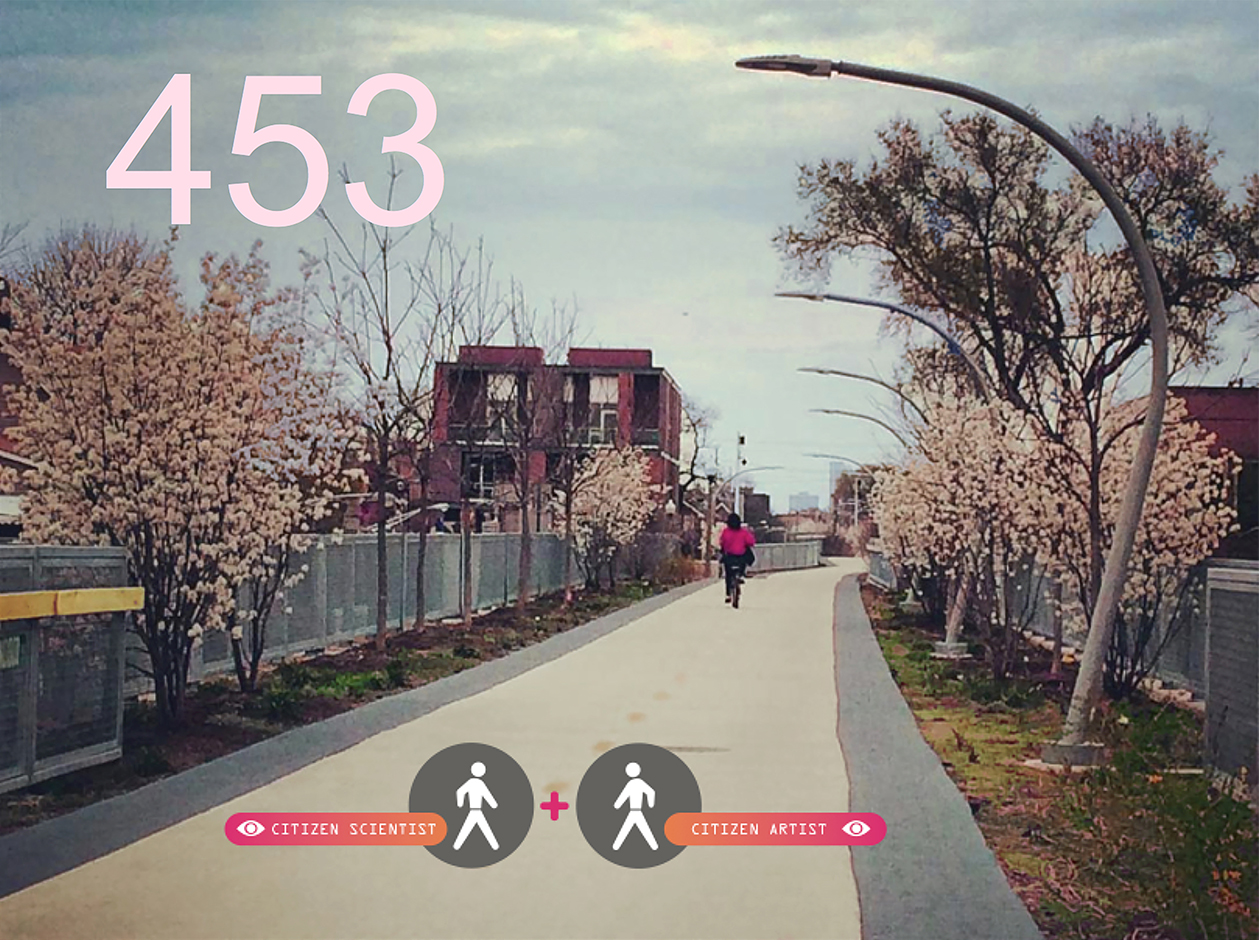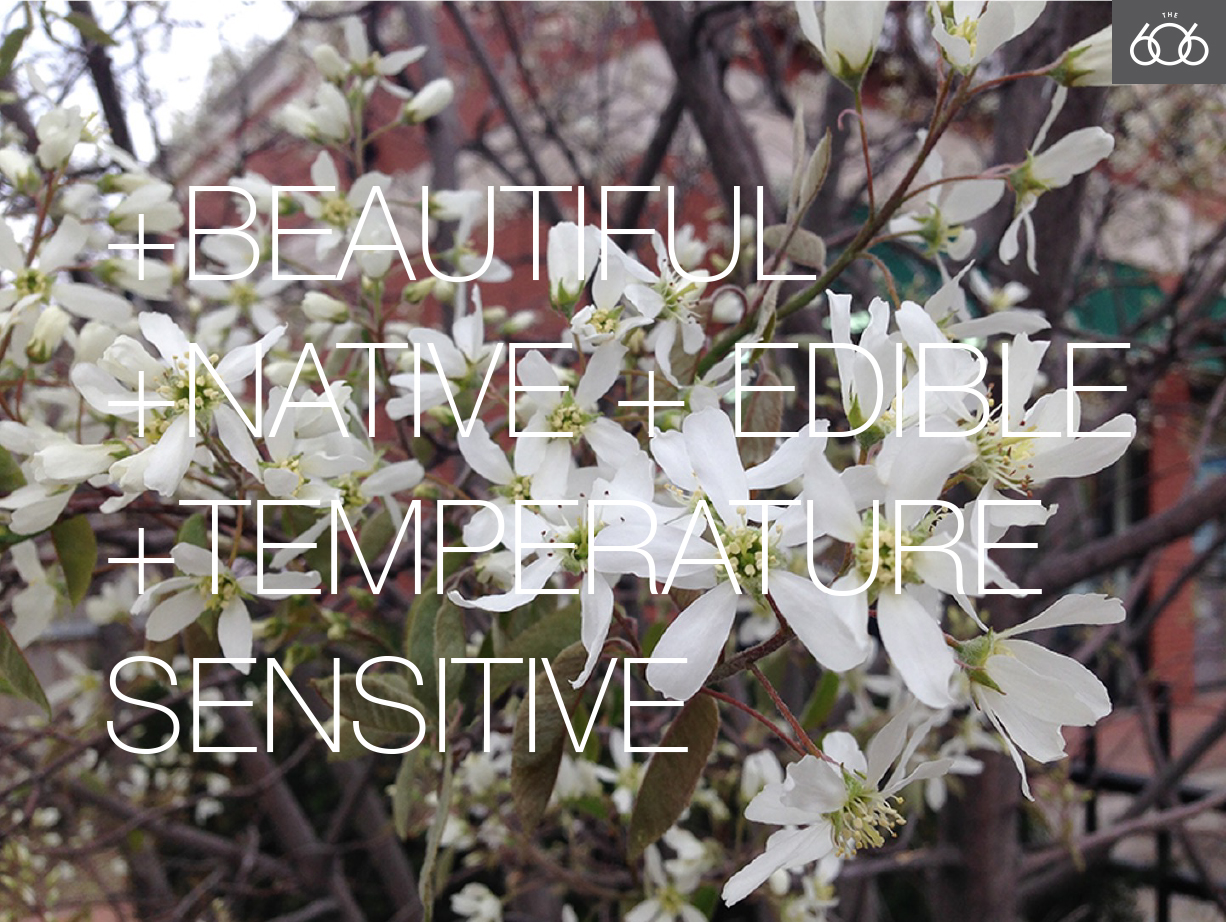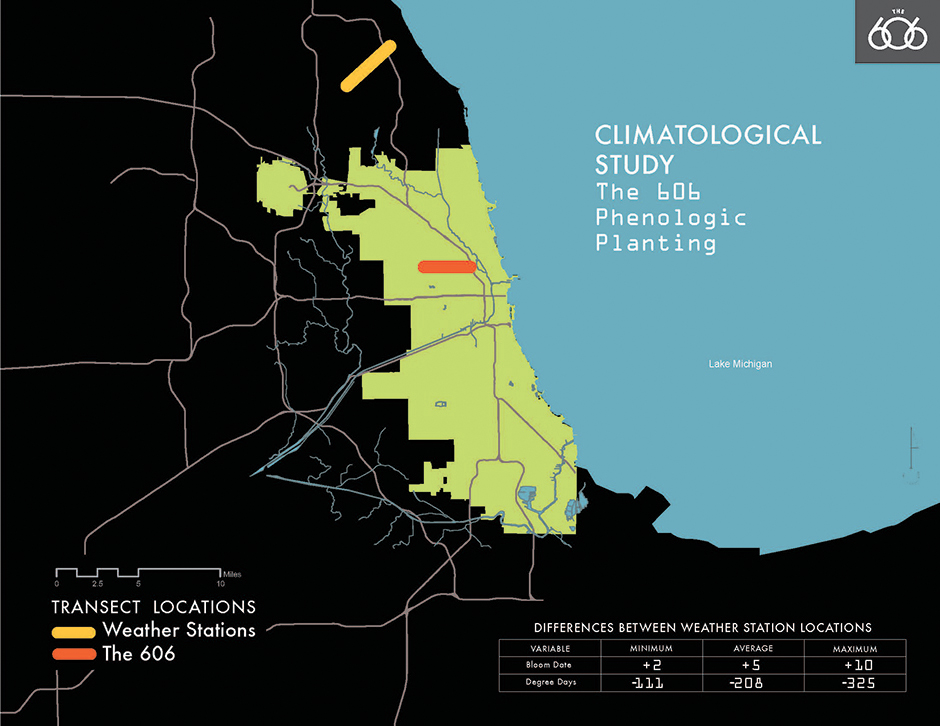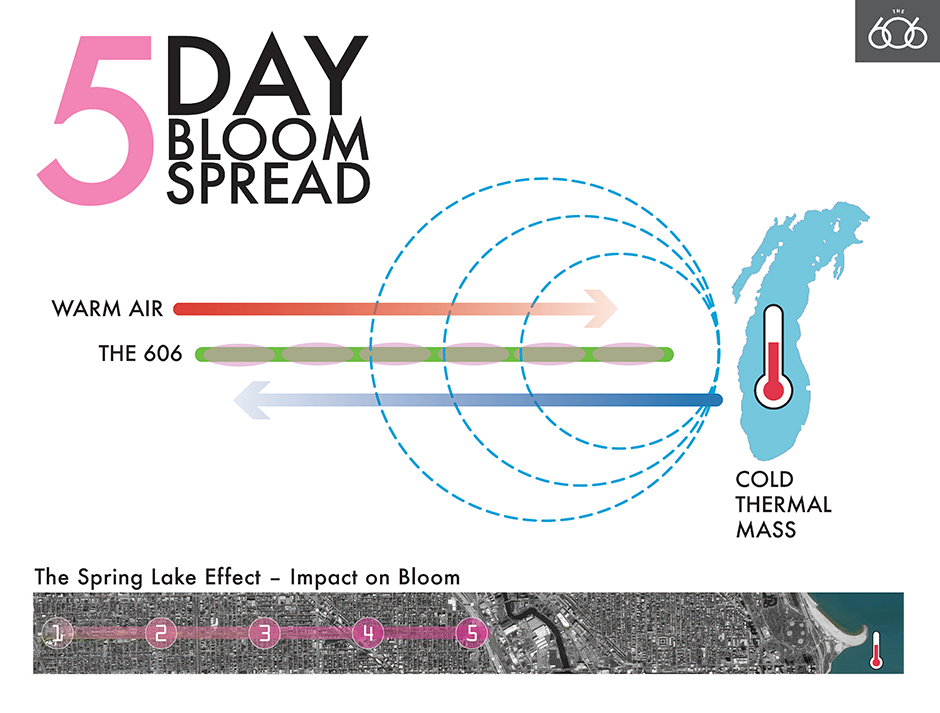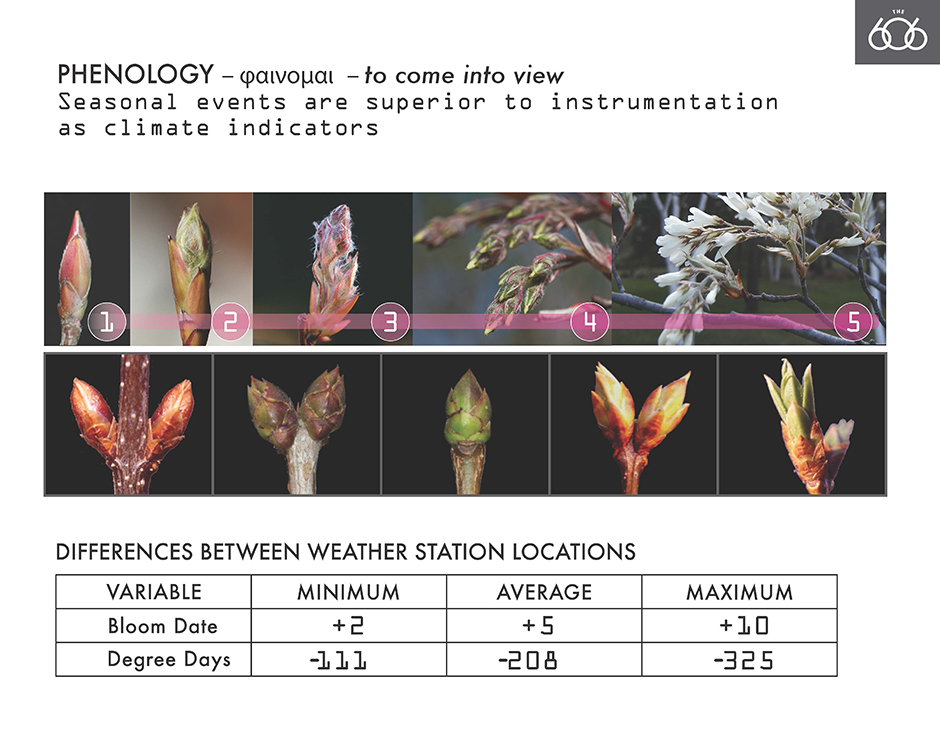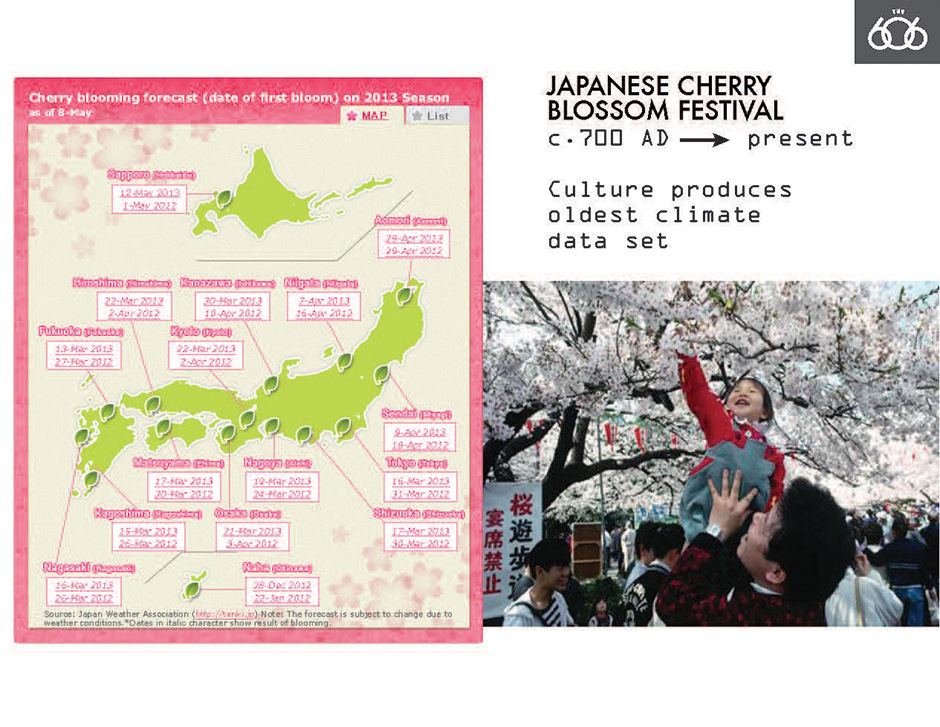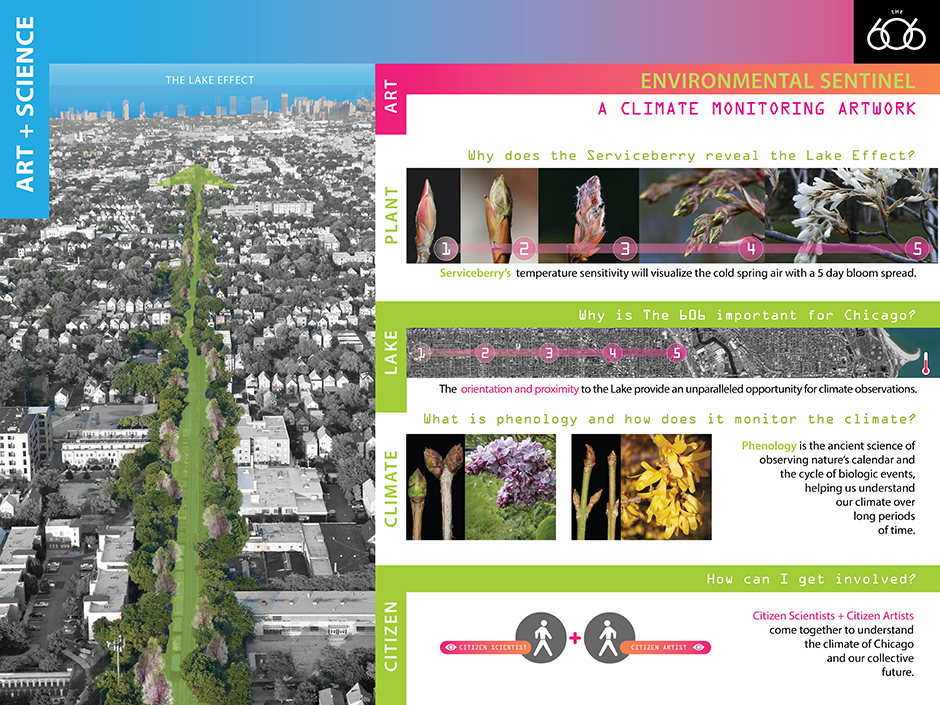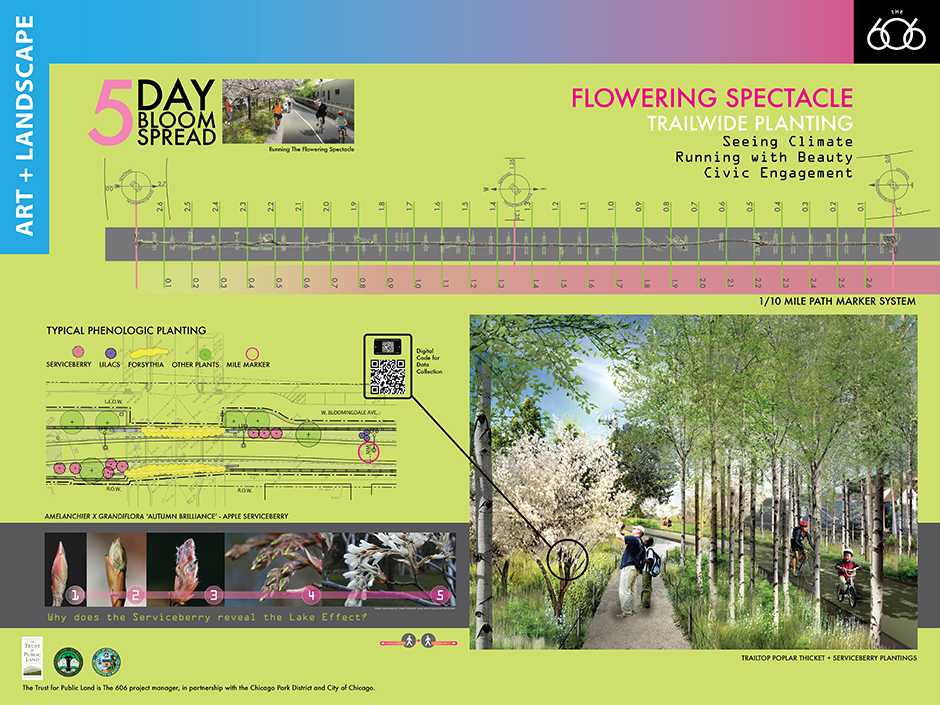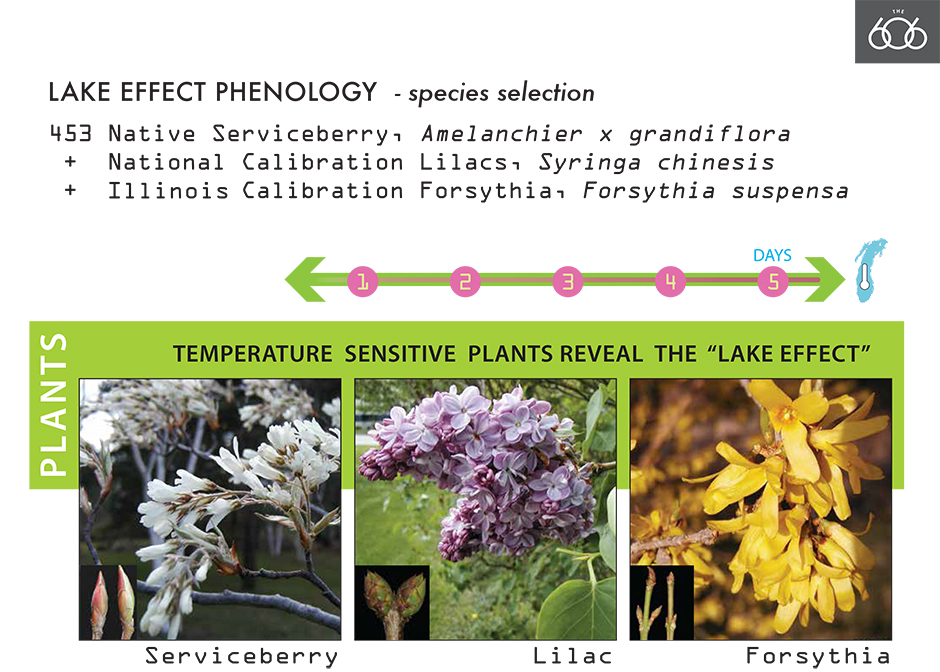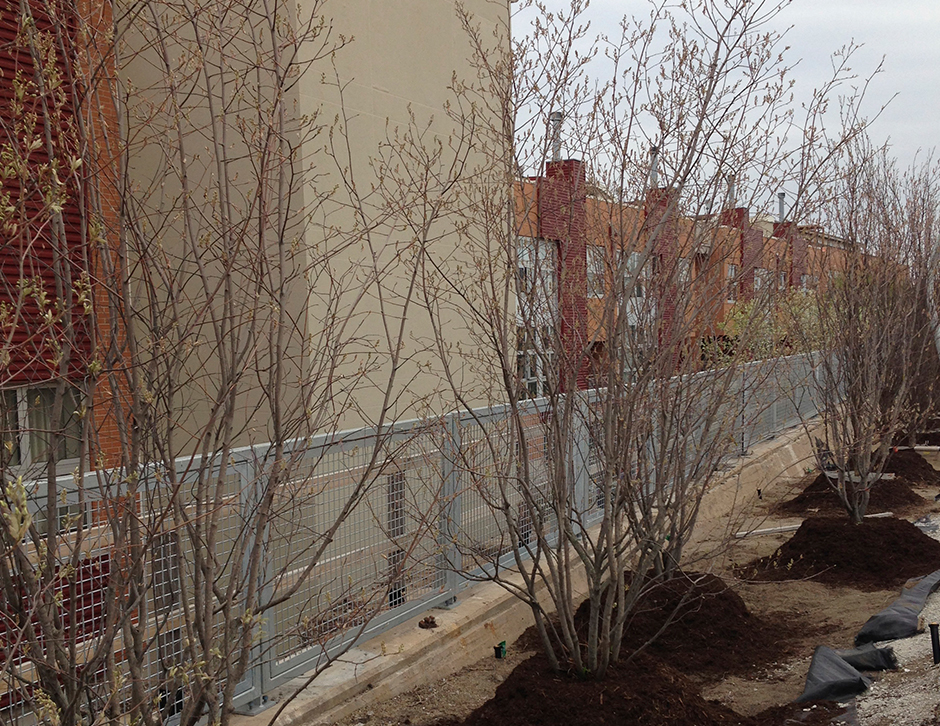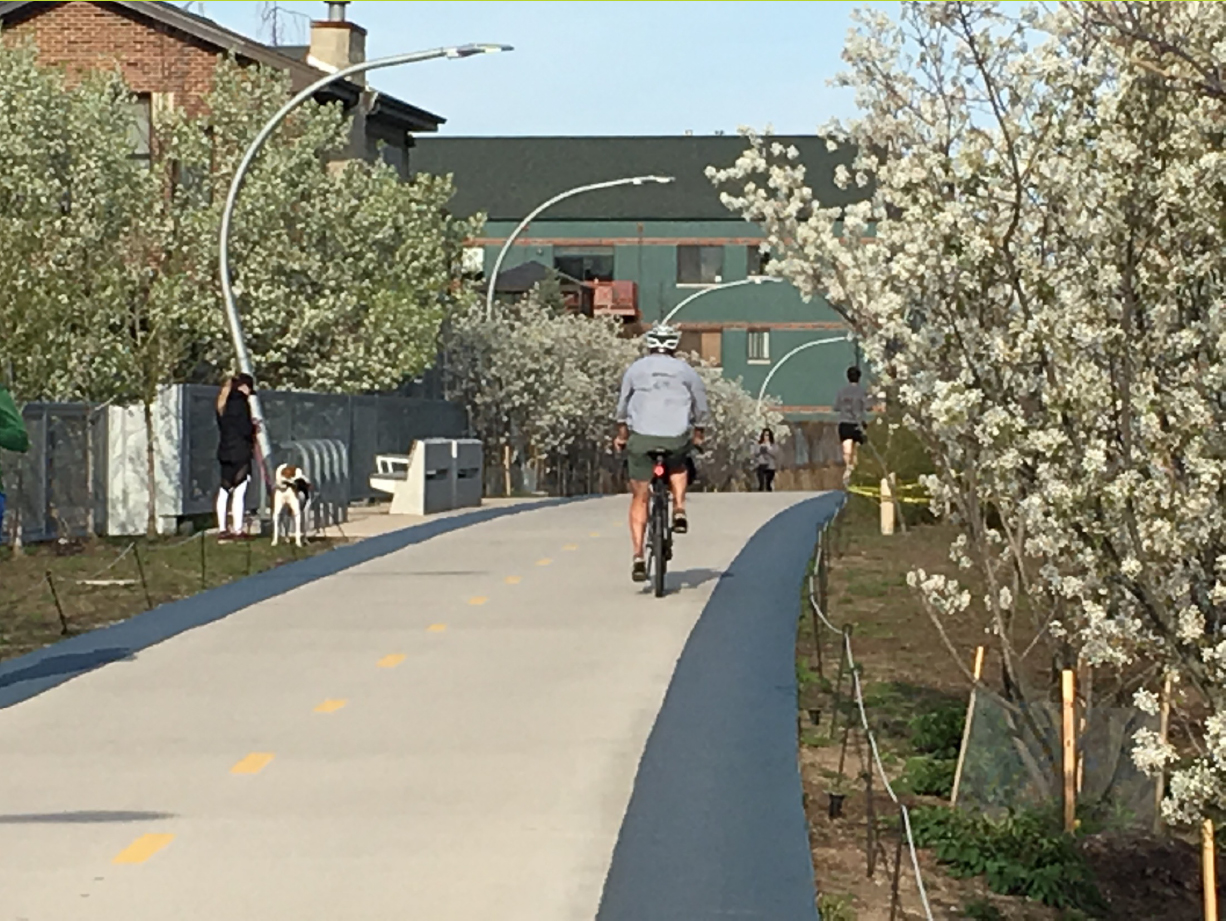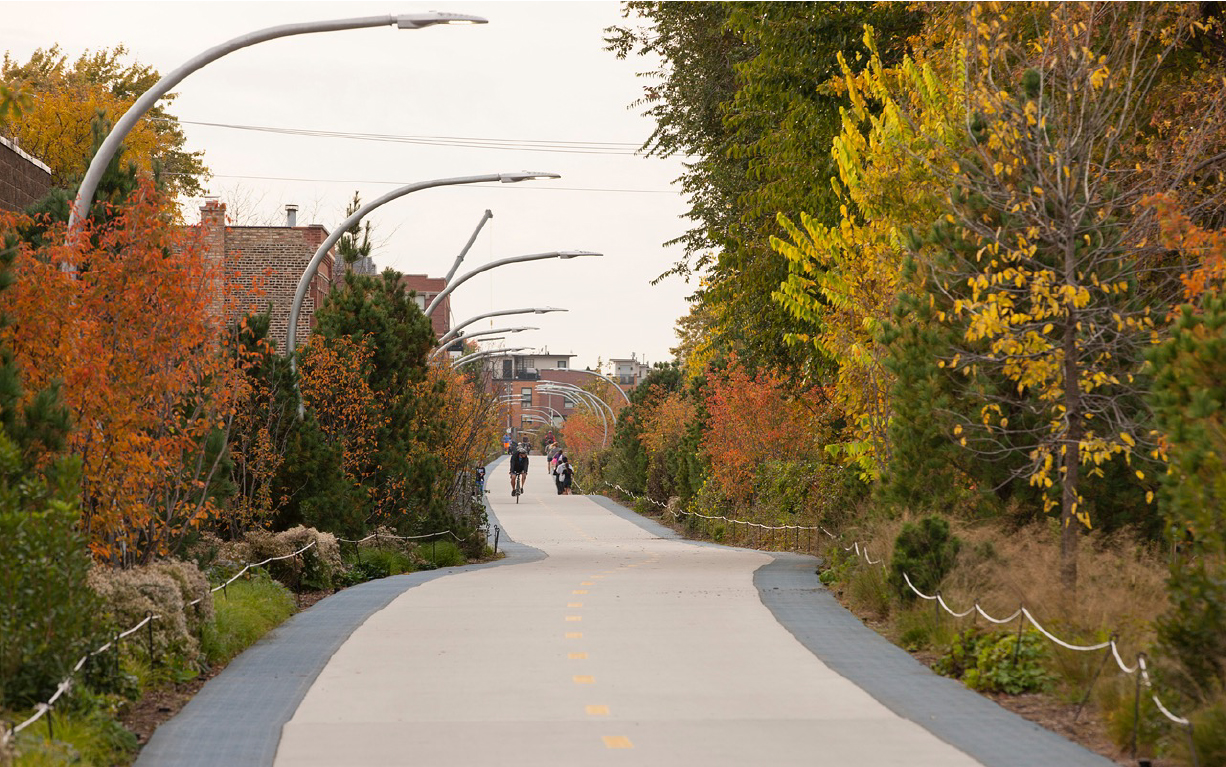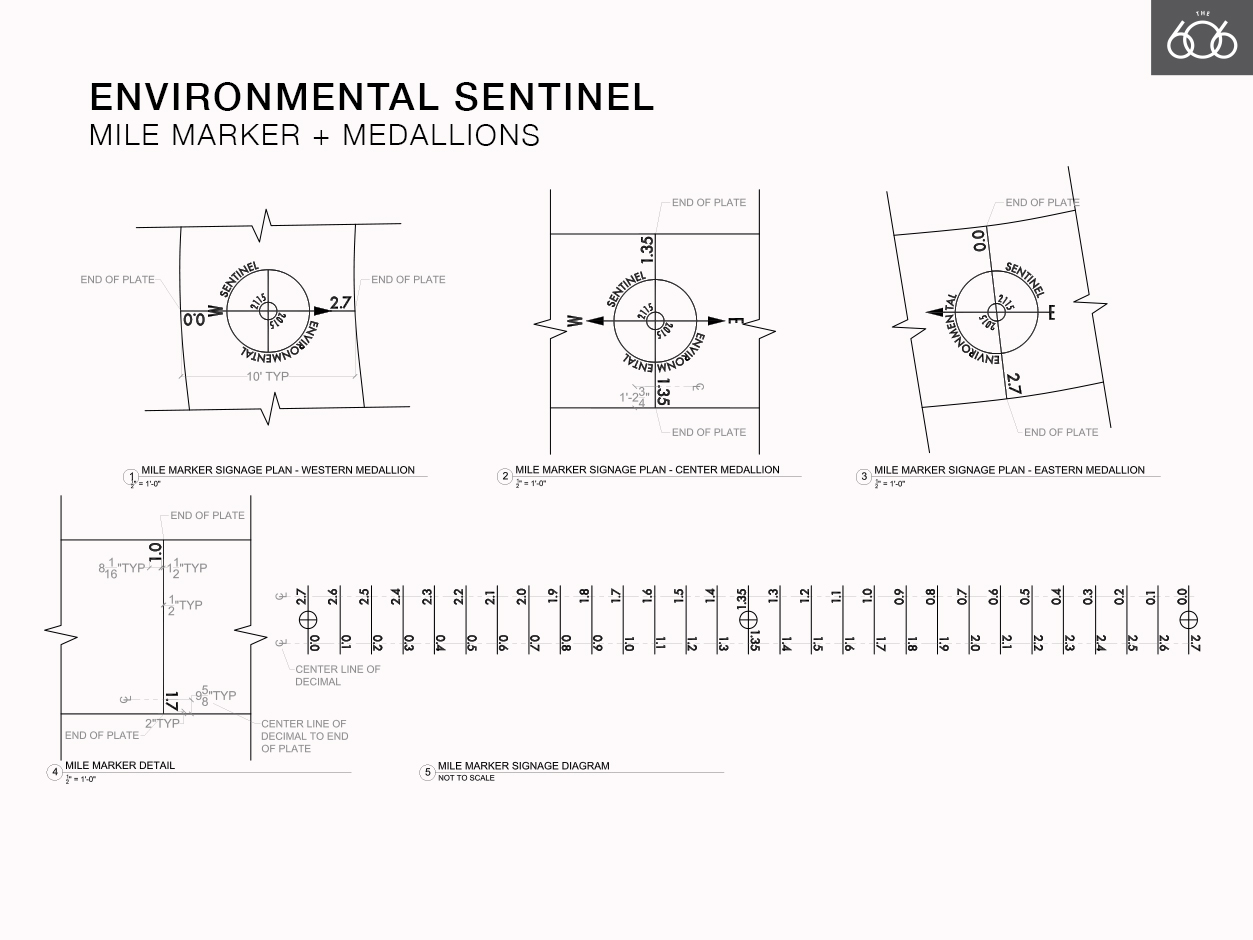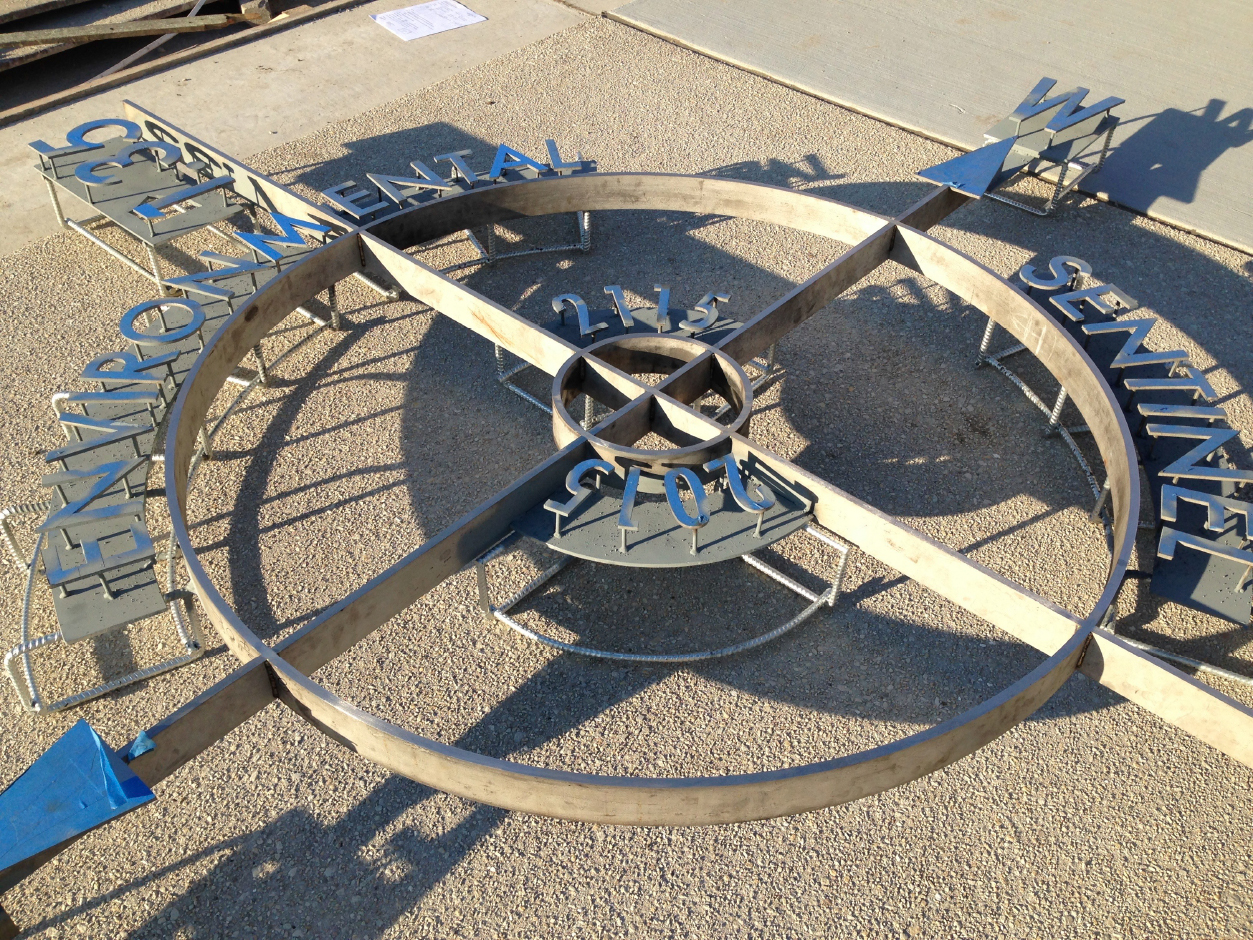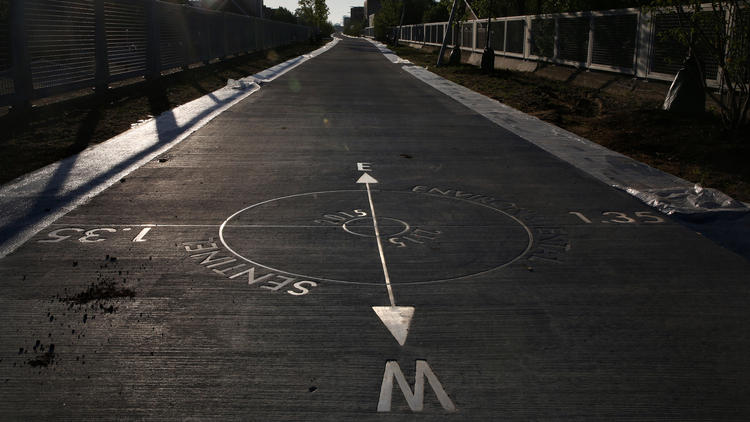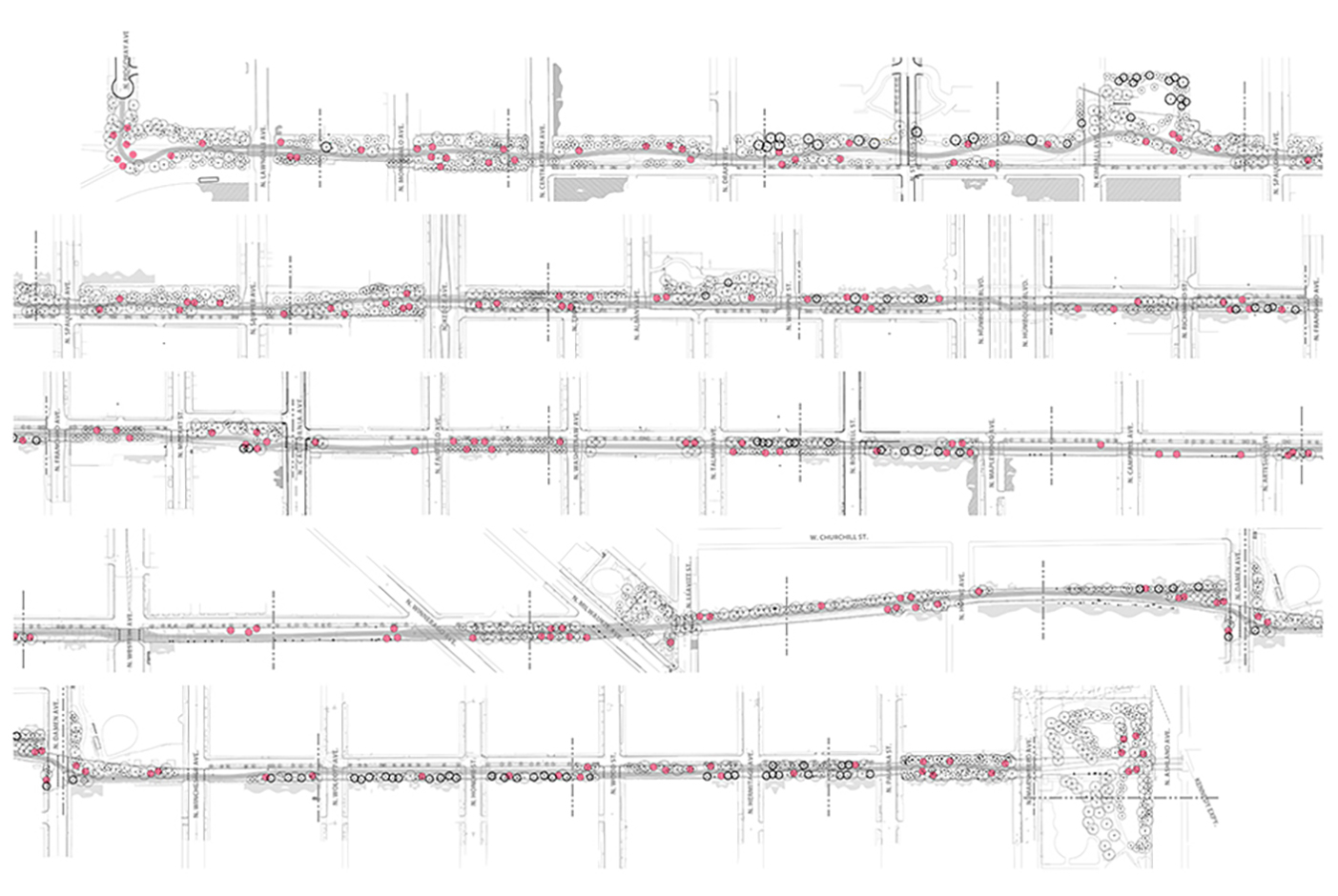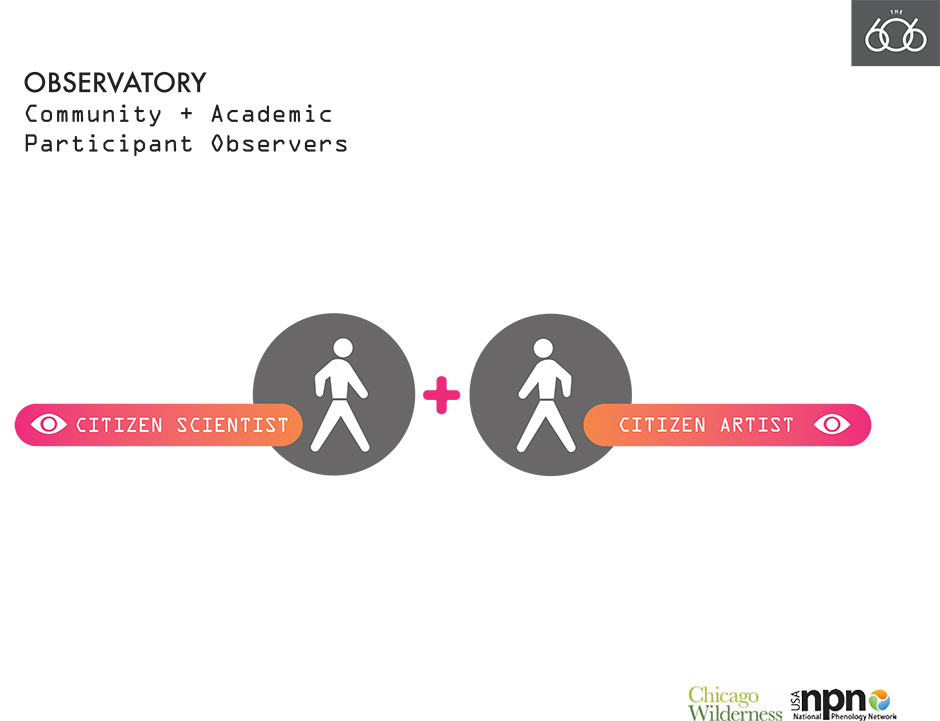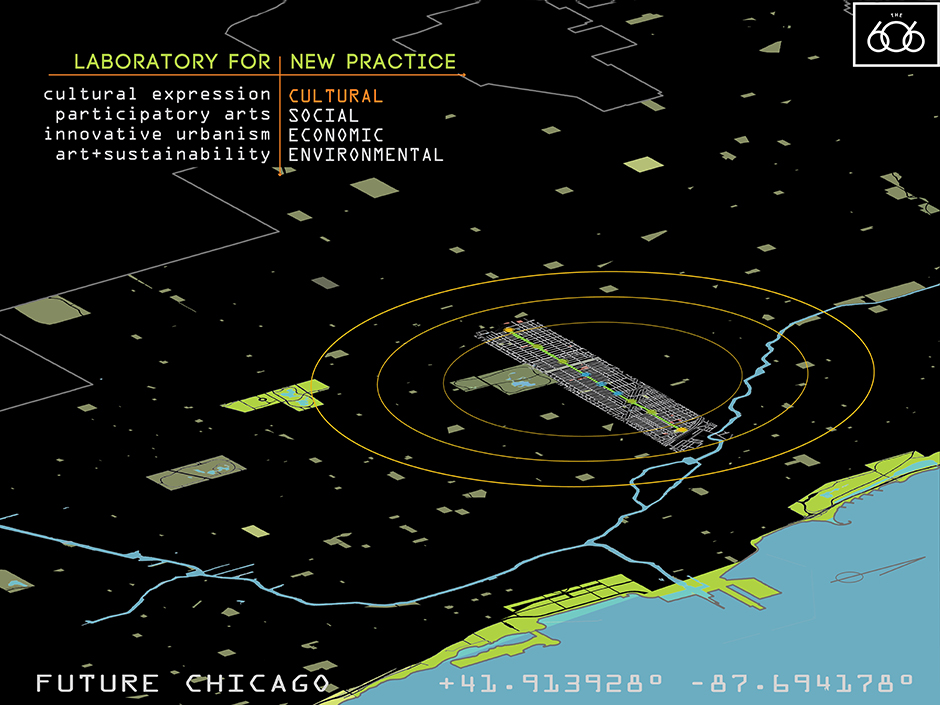FRANCESA
RANCESWR
ANCESWHT
NCESWHIE
CESWHITT
ESWHITEA
SWHITEHL
WHITEHE
HITEHEA
ITEHEAD
TWHEADF
EHEADFR
HEADFRA
EADFRAN
ADFRANC
DFRANCE
DATE
2015 - 2115
ART + SCIENCE TEAM
Frances Whitehead, Concept Author
Dr. Mark D. Schwartz, President, International Society of Biometeorology
USA National Phenologic Network
The Morton Arboretum, Chicago
Chicago Wilderness Alliance
Peggy Notebaert Nature Museum, Chicago
THE 606 DESIGN TEAM
Frances Whitehead, Lead Artist
Collins Engineers, Engineering and Design Team Lead
Michael Van Valkenburgh Associates, Landscape Design
Environmental Sentinel
A CLIMATE MONITORING ARTWORK
The serviceberry project is intended to measure the effects of Lake Michigan and, over time, climate change, on the fruit-bearing trees.
Environmental Sentinel is a 3 mile climate-monitoring artwork and landscape intervention created as a key feature for The 606, a rail adaptation project under construction in Chicago, scheduled to open in May 2015. The artwork will consist of a planted line of 453 native, flowering trees Amelanchier x grandiflora (Apple Serviceberry), whose five-day bloom spread will visualize Chicago’s famous Lake Effect in spring and fall.
Modeled after the Japanese cherry blossom festival whose transient blooming has attracted audiences for centuries, this phenologic spectacle will become a living data visualization in time and space, allowing scientists, artists and citizens of all ages to observe and study Chicago’s relationship to Lake Michigan over the next century.
A five-day bloom spread will visualize Chicago’s famous Lake Effect in spring and fall.
Numbered and tagged, each tree is part of a citizen science climate monitoring program run by The Trust for Public Land.
These temperature-sensitive plants will serve as bio-indicators of microclimate change along this dynamic site, environmental “sentinels” for Chicago’s future. The planting will also reveal to the public how large bodies of water like Lake Michigan affect local temperature patterns in spring and fall.
